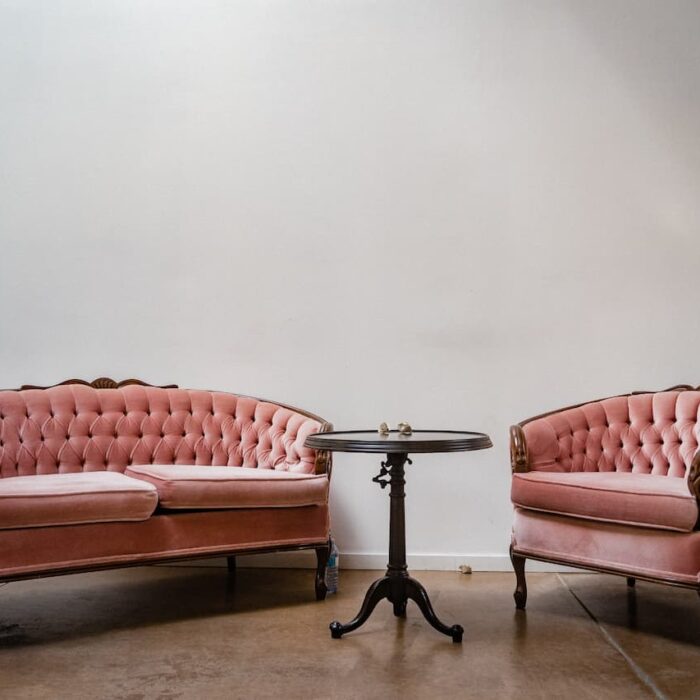
Interior design is a field of specialization within architecture, which focuses on the arrangement of space, form and color to achieve a desired effect. The use of space is an important concept in interior design. To successfully integrate the elements of design into a functional whole, it is necessary to understand how people interact with spaces and how spaces function in everyday life.
Modern
Modern architecture and design is the style that emerged in the 1920s and 1930s and marked the beginning of the most recent era in the history of interior design. The word “modernism” describes a design philosophy that is based on the idea of function and form.
Modernism doesn’t necessarily have to be white-walled, though it can be if you wish! To achieve this look you need furniture pieces that are sleek and simple; think straight lines, minimalistic shapes, no clutter or unnecessary items in your space. Keep anything extra out of sight by storing items under beds or behind doors (or even better, get rid of them!). You can incorporate colour into your decor by using accessories such as pots for plants – which also serve as an excellent way to add greenery into any room!
Coastal
Coastal style is inspired by the beach. It’s bright, airy and clean. Coastal style emphasizes natural materials like wood, leather and wicker furniture. These natural elements are accented with the use of textiles that are fresh and vibrant in color. The key to a great coastal style room is comfort. Lighting should be soft but not too bright so as not to disturb your sleep cycle while you rest on your bed or couch in the evening hours after work or school.
Coastal design is also very minimalistic because it removes clutter from your home environment so as not to distract you from enjoying nature’s beauty – which is why it has such a calming effect on people who live there! When designing this type of room make sure to incorporate some kind of water feature such as a fish tank or even an aquarium filled with sea life found off shore near where they live (if possible).
Bohemian
The Bohemian style is inspired by the Gypsy culture and its influence on the European art scene. It’s a mix of antique and modern furniture, colorful patterns, bold graphics and natural materials like wood.
Bohemian style can be used in living rooms with floral-printed fabrics or in bedrooms with vintage-style linens. The same goes for kitchens and bathrooms — you’ll find just as many boho designs there!
Traditional
Traditional style is characterized by symmetry, order, and balance. Traditional design can be very formal, but it also can have a more casual feel. This style often uses warm colors like reds, oranges and yellows; dark wood tones; natural fabrics like linen and silk; and intricate patterns with floral designs. Traditional furniture styles include heavy pieces with ornamental carvings or inlays of ivory or tortoiseshell shells.
Traditional furniture is generally larger than modern pieces because people had less space to work with in the past. They also tend to be more expensive because they’re made from more expensive materials like mahogany instead of pine or oak plywood panels covered in veneer that’s wrapped around particleboard (like most IKEA products).
Mid-century modern
Mid-century modern is a style that emerged in the 1950s and 60s. It is characterized by clean lines, minimalist design, and a lack of ornamentation. Mid-century modern style was inspired by the Bauhaus movement of the early 20th century. Bauhaus principles emphasized simple forms and materials over those that were decorative or ornate.
Designers who embraced mid-century modernism sought to bring these ideas into their homes through furniture such as chairs, tables, sofas and dressers made from wood or metal alloys with simple curves and geometric shapes that could be mass produced for affordable prices.
Scandinavian
Scandinavian style is very minimalist and clean. It’s bright, airy and open with lots of light. Scandinavian interiors are mostly white or neutral colors, with simple furniture and accessories. The focus is on creating a beautiful space that reflects who you are as a person – it’s about you!
This type of design isn’t for everyone because it’s so different from other interior styles, but if you love minimalism then this could be the perfect look for your home!
Industrial
Industrial style is about using raw materials and simple shapes. It’s simple, but not necessarily easy to achieve. In fact, it can be quite difficult to get the look right if you’re not careful.
In order to create an industrial interior, you need to have a few things in mind:
- The space needs to feel casual and relaxed. Industrial designs are not meant for formal environments — they are intended for people who want a more rugged feel in their living spaces or work areas.
- You’ll need plenty of natural light coming into your home or workspace if possible because this will help brighten up any space that feels claustrophobic due to its lack of windows or other sources of natural light (like large windows). If there isn’t much room on either side of the building where sunlight can enter freely through openings like doors or windows then consider adding skylights instead so that there will still be enough light getting into each room without making anyone feel like they’re walking through an underground tunnel every time they come home from work!
We hope this guide has helped you understand the different styles and what they mean.